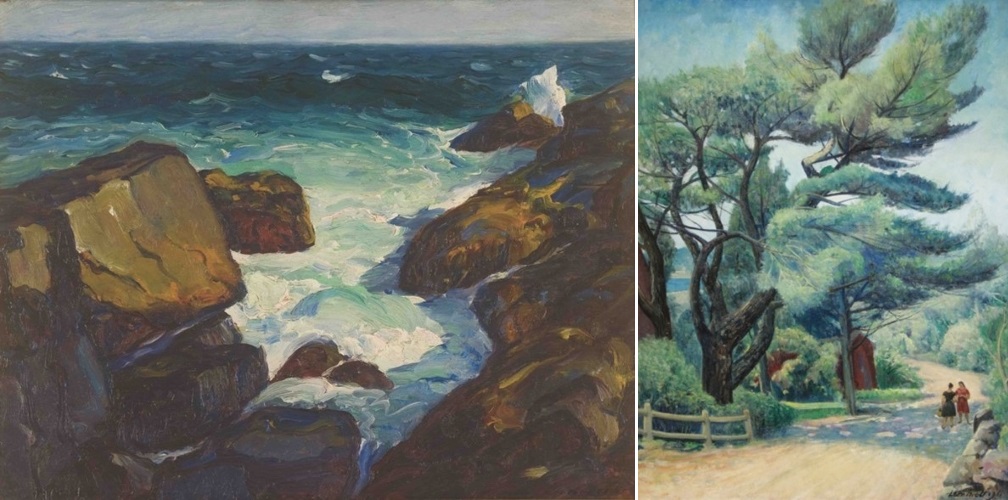
William Meyerowitz (1896-1981), Gloucester Humoresque, 1923, oil on canvas. Collection of the Cape Ann Museum, Gloucester, MA. Gift of James F. O’Gorman and Jean Baer O'Gorman, 1985 [Acc. #2510.4].

Dear Friends,
We are delighted to share that due to popular demand the Museum is extending the Cape Ann & Monhegan Island Vistas exhibition through March 31, 2022. Please do visit this inspiring look into the importance and inspiration of place. This weekend we hope that you will join the Cape Ann Museum and other local organizations for the first ever Gloucester’s So Salty, January 22 and 23, from 1 to 4 pm.
Just a reminder that the Museum is continuing to require all visitors to wear masks indoors. Visitors 12+ must show proof of vaccination and all visitors 18+ must show an ID.
With the New Year and many exciting exhibitions and initiatives planned for 2022, we are delighted to also announce that Henrietta Gates, formerly the Vice Chair of the Museum’s Board of Trustees, is now taking over from Charles Esdaile as Chair. Henrietta brings many years of experience working with non-profits to her new Board Chair position and has been an invaluable resource as a CAM Board member over the last eight years.
Sincere thanks also to Charles Esdaile who will continue to serve on CAM’s Board of Trustees and who oversaw an unprecedented time in Museum’s history – the transition to new leadership, the delivery of the nationally acclaimed Homer at the Beach exhibition, the opening of the Cape Ann Museum Green, and the many ways CAM has pivoted during the pandemic to continue to support the Cape Ann community and tell its stories.
Looking forward to seeing you all soon at CAM, stay safe, warm and please do join us for some outdoor fun as part of Gloucester’s So Salty this Saturday and Sunday!

Oliver Barker, Director

John Sloan (1871-1951), Sunflowers on Rocky Neck, 1914, oil on canvas. Collection of the Cape Ann Museum, Gloucester, MA. Gift of Alfred Mayor and Martha M. Smith, 2008 [Acc. #2008.14].

Rocky Neck Artists’ Ball, c. 1937. Photograph by Eleanor Parke Custis. Collection of the Cape Ann Museum Library & Archives, Gloucester, MA.



